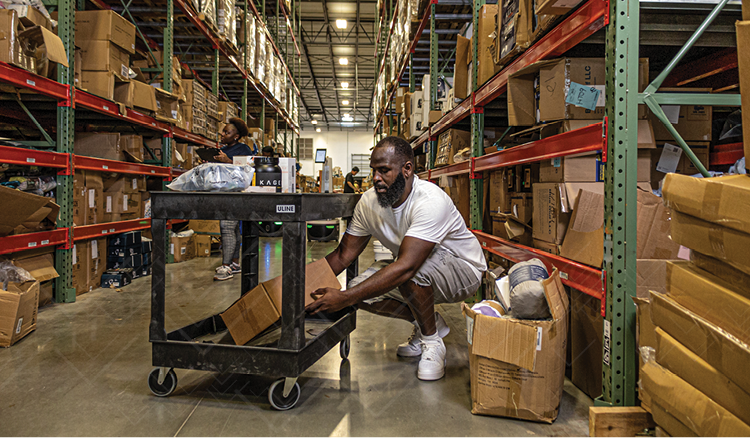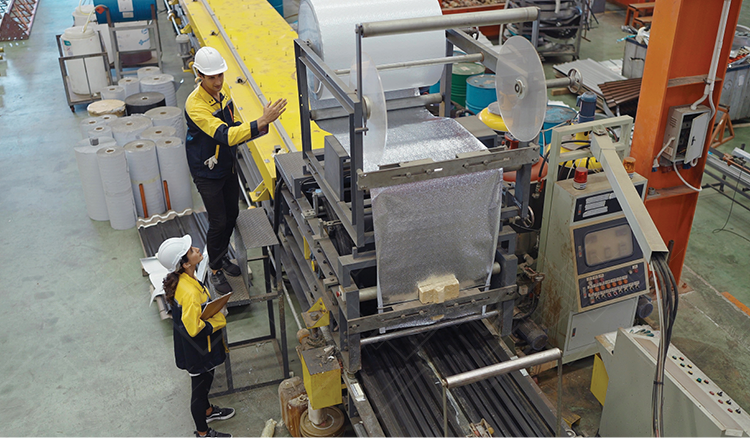Revolutionizing Manufacturing: How Veryable Is Reshaping Talent Acquisition and Retention
In the aftermath of the unprecedented economic downturn caused by the pandemic in 2020, the manufacturing sector has displayed resilience in recovering lost jobs. As a matter of fact, it is not about the availability of jobs; it's about finding and retaining the right workers to fill key positions. As of June 2023, there were 582,000 job vacancies within the manufacturing sector, highlighting the urgent need for innovative approaches to talent acquisition and retention.
The persistent scarcity of workers combined with a disparity in skillsets for smart manufacturing has the potential to impede economic expansion and the competitive edge of the manufacturing sector. Consequently, businesses are confronted with the challenge of addressing their labor force deficits. What’s the solution? The solution revolves around a shift from conventional function-centric approaches to a technology-driven, agile outcome-oriented recruitment strategy. A flexible solution is imperative, and this is where Veryable comes into play.
By harnessing Veryable's labor technology effectively, companies can achieve dual objectives: augmenting their workforce and expanding outsourcing capabilities. The adept utilization of this technology will also yield the stability desired in terms of employee retention and turnover, achieved through the establishment of a well-constructed labor pool comprising skilled and knowledgeable operators.
This article will delve into the factors exacerbating the labor shortage, the pandemic's influence on reshaping workforce preferences, and the innovative labor solution provided by Veryable—a platform at the forefront of a revolution in the manufacturing sector.
The Big Short
As per the latest economic news release from the U.S. Bureau of Labor, the manufacturing industry is seeking to occupy more than 500,000 job vacancies.2 Despite a recent cooling in the labor market (April 2022 saw a record of over a million vacancies), the primary concern for businesses to attract and retain employees persists.3 A joint report by Deloitte and the Manufacturing Institute predicts an impending escalation in this figure, estimating that approximately 2.1 million manufacturing jobs could go unfilled by 2030.4 The study cautions that this shortage has the potential to inflict up to a $1 trillion impact on the U.S. economy.
The joint report also highlighted how the manufacturing sector experienced a setback of more than a decade's worth of employment progress due to the COVID-19 pandemic, erasing over 1.4 million positions. Although these positions have been regained, roughly 582,000 roles remain vacant, with employers expressing their frustration with the inability to fill roles. These vacancies encompass a spectrum of positions, ranging from higher-paying entry-level jobs to specialized roles necessitating skilled labor. Consequently, businesses are now in a frenzied pursuit to identify solutions and determine the necessary incentives to attract prospective workers.
The Unanticipated Shift: The Influence of the 2020 Pandemic

There are several factors contributing to the vacancies in these positions. Among the primary factors is the perception that the manufacturing sector lacks flexibility. This perception was largely shaped by the pandemic, which triggered a major shift in how work is conducted, leading to fully remote or hybrid work schedules. During this time, people saw that work can still be done at different times rather than the normal 9-to-5. This allowed workers to handle personal commitments better.
This preference for flexibility (especially for younger workers) has now evolved into a crucial element for individuals seeking employment, exerting significant influence over their job choices. In the year 2022 alone, roughly 50 million workers (referred to by some as the "great reshuffle") left their jobs in pursuit of new opportunities, primarily driven by the desire for an improved balance between work and personal life, as well as the ability to adapt their work arrangements. As one treasury executive for a manufacturer of equipment put it, "From what I'm hearing, you're going to have to offer younger people things like flexible work hours; it's not always about pay."
Navigating Shop Floor Challenges
For traditional manufacturing roles, historically tied to on-site presence, offering greater flexibility has been a struggle.Obviously, shop floor positions are different from those offered to office staff or remote workers, as manufacturers must fulfill in-person production requirements and timelines. This predicament has prompted companies to explore innovative remedies, including experimenting with various strategies like condensed work weeks, rotational schedules, flexible timing, and shift exchanges. Nevertheless, these alternatives have proven insufficient in terms of recruitment efforts. The manufacturing industry appeared to lack a straightforward resolution until Veryable entered the scene.
The Role of Veryable: Solving the Manufacturing Labor Shortage
Discipline, reliability, a team-player mindset, and leadership—manufacturers are looking for all these qualities in the talent they recruit. What if companies could tap into a population not only equipped with these skills but also experienced in high-stakes situations? They can with Veryable, all while allowing workers the flexibility they so badly desire. Veryable has emerged as the transformative solution for the manufacturing sector's talent crisis. Veryable offers a revolutionary approach—a marketplace connecting manufacturers with skilled and well-reviewed Operators (how we refer to our independent contractors), a concept distinct from traditional staffing models and significantly enhanced compared to the usual hiring techniques employed by manufacturers.
Veryable's tech-enabled approach aligns with the evolving expectations of the workforce. Unlike staffing firms that impose rigid arrangements ("leasing" and "placing" employees), Veryable provides Operators with autonomy over their terms, schedules, and workloads. This approach not only benefits manufacturers by providing flexibility but also empowers Operators to take ownership of their work.

Let's discuss a few examples below that showcase the value of Veryable's platform for manufacturers.
Establishing a dynamic labor pool: At the core of Veryable's solution is the concept of creating a dynamic and diverse labor pool. Instead of relying solely on conventional job postings, manufacturers tap into Veryable's platform to access the pool of talented Operators they have curated. This strategic approach ensures scalability, enabling companies to meet varying levels of demand and take on larger projects that were previously limited by labor constraints. The outcome is a workforce that can adapt to changing requirements, ensuring seamless operations.
Merit-Based Operator Ratings: As discussed in my previous post, a distinctive feature of Veryable's platform is its emphasis on meritocracy. The platform leverages genuine reviews from previous businesses to provide manufacturers with an unbiased assessment of an Operator's skills, dependability, and safety track record. Unlike traditional resumes, which can be tailored to present a certain image, these reviews offer an unfiltered perspective, enabling informed decisions in talent selection.
Conclusion
Addressing the current challenge of attracting and retaining talent in the manufacturing sector necessitates a revolutionary shift in approach. Veryable's innovative platform provides a tailor-made solution that aligns with the expectations of the modern workforce, enabling manufacturers not only to adapt but to thrive in an increasingly competitive landscape. As the industry grapples with present and future challenges, the adoption of flexible, technology-driven strategies holds the key to sustained growth and success. Through Veryable's forward-thinking approach, manufacturers can transcend the limitations of traditional recruitment methods, ushering in a new era characterized by flexibility, innovation, and unparalleled talent management.
Previous Posts
How Policy Constraints, Not Just Production Bottlenecks, Threaten Your Bottom Line
The Future of Manufacturing and Logistics
Create a free business profile today to explore our platform.






